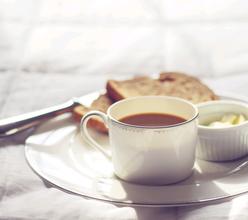Jamaica Blue Mountain Coffee Estate Wallenford Estate
Blue Mountain Coffee is one of the three major growing regions, the other two being Portland and St. Thomas. Thomas) producing area. Within eight years, Jamaica exported more than 375 tons of pure coffee. Coffee production peaked in 1932, harvesting more than 15000 tons of coffee. But by 1948, coffee quality had declined and Canadian buyers refused to renew the contract, so the Jamaica government set up the Coffee Industry Council to save the fate of premium coffee. By 1969, the situation had improved because Japanese loans had improved the quality of production and thus secured the market. Even in 1969, Japanese coffee drinkers were willing to pay insurance for the coffee, but today it has reached the point where it is a cult favorite. By 1981, about 1500 hectares of land had been cleared for coffee in Jamaica, followed by investment in another 6000 hectares.
In fact, today's Blue Mountain region is a small area of only 6000 hectares, and not all the coffee labeled "Blue Mountain" can be grown there. An additional 12000 hectares are devoted to growing two other types of coffee (non-Blue Mountain coffee): High Mountain Supreme and Jamaica Prime Washed Jamaican.
The real Blue Mountain Coffee is one of the world's best grown coffees, and Jamaica's weather, geology and terrain combine to provide the ideal location. The ridge across Jamaica extends to the east of the island, and the Blue Mountains rise to more than 2100 meters. Cool, foggy weather and frequent rainfall have tempered this fertile land with rain. Here coffee trees are grown in mixed cropping, alongside banana and avocado trees on terraces. Blue Mountain coffee is also grown on small estates such as Wallenford Estate, Silver Hill Estate, and J. Martinez's Atlanta Estate. Even the largest planters in the region are small-scale farmers by international standards, many of whom are smallholders whose families have worked the land for two centuries

Important Notice :
前街咖啡 FrontStreet Coffee has moved to new addredd:
FrontStreet Coffee Address: 315,Donghua East Road,GuangZhou
Tel:020 38364473
- Prev

Introduction to the flavor characteristics of Honduran coffee beans Linus Manor
Medium or shallow acidity, giving the impression of obvious but not strong. Sometimes it has a beautiful floral or fruity aroma (generally speaking, beans produced in different regions and at different elevations have different performances). It is not at all associated with the unrest of the country. Bitterness and obvious sweetness. The overall taste of Honduran coffee is balanced, sour and bitter are not so strong, between the two
- Next

Introduction to the Flavor of Nicaraguan Coffee
Dry aroma (1-5): 3.8 wet aroma (1-5): 3.8 acidity (brightness) (1-10): 8.9 taste (layering) (1-10): 8.8 taste (alcohol thickness) (1-5): 3.4 aftertaste (residue) (1-10): 8.9 balance (1-5): 2 basic score (50): 50 total score (maximum 100): 89.6 strength / strength Main attributes: medium strength / clear chocolate
Related
- Does Rose Summer choose Blue, Green or Red? Detailed explanation of Rose Summer Coffee plots and Classification in Panamanian Jade Manor
- What is the difference between the origin, producing area, processing plant, cooperative and manor of coffee beans?
- How fine does the espresso powder fit? how to grind the espresso?
- Sca coffee roasting degree color card coffee roasting degree 8 roasting color values what do you mean?
- The practice of lattes: how to make lattes at home
- Introduction to Indonesian Fine Coffee beans-- Java Coffee producing area of Indonesian Arabica Coffee
- How much will the flavor of light and medium roasted rose summer be expressed? What baking level is rose summer suitable for?
- Introduction to the characteristics of washing, sun-drying or wet-planing coffee commonly used in Mantenin, Indonesia
- Price characteristics of Arabica Coffee Bean Starbucks introduction to Manning Coffee Bean Taste producing area Variety Manor
- What is the authentic Yega flavor? What are the flavor characteristics of the really excellent Yejasuffi coffee beans?

